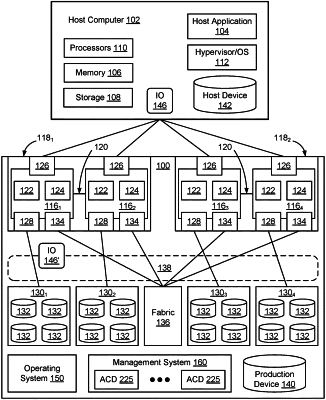| CPC G06F 3/0659 (2013.01) [G06F 3/0604 (2013.01); G06F 3/067 (2013.01)] | 20 Claims |

|
1. A non-transitory tangible computer readable storage medium having stored thereon a computer program for enabling storage management hosts to use multiple types of array control devices for syscalls in a storage management system, the computer program including a set of instructions which, when executed by a computer, cause the computer to perform a method comprising the steps of:
configuring a set of array control devices on a management daemon, the set of array control devices including:
a Non-Volatile Memory Express (NVMe) device implemented as a first array control device on the management daemon and configured to be used by the management daemon to implement syscalls on a first storage system; and
a Transport Control Protocol/Internet Protocol (TCP/IP) connection implemented as a logical second array control device on the management daemon and configured to be used by the management daemon to implement syscalls on a second storage system;
receiving a first set of syscalls, by a management daemon to be implemented on the first storage system;
implementing syscalls of the first set of syscalls, by the management daemon, by encapsulating the syscalls of the first set of syscalls in NVMe administrative commands, and issuing the NVMe administrative commands on the NVMe device;
receiving a second set of syscalls, by a management daemon to be implemented on the second storage system;
implementing syscalls of the second set of syscalls, by the management daemon, by encapsulating the syscalls of the second set of syscalls with TCP headers, and transmitting the encapsulated syscalls on the TCP/IP connection to the second storage system.
|